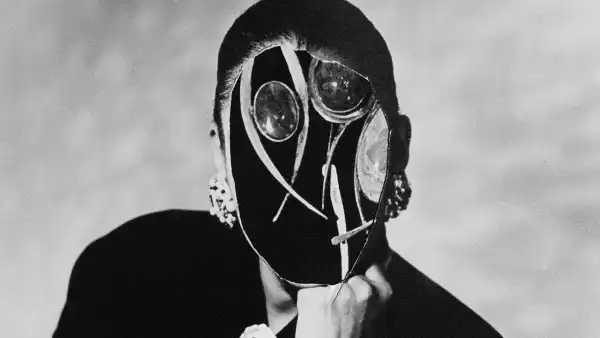
Save this storySave this storySave this storySave this story
The last time Shakespeare’s bloody tragedy “Titus Andronicus” was staged at the Globe Theatre, in London, in 2014, members of the audience regularly fainted. Each performance, the crew kept a running tally of the fallen. Recovering theatregoers were placed in a separate box for the remainder of the show. “I used to be disappointed if I got three fainters,” the production’s director, Lucy Bailey, recently told me. Her previous staging of “Titus,” in 2006, once caused upward of forty faintings in one sitting. A team of paramedics was stationed outside.
The swooners, we presume, were well hydrated and not wearing corsets. And while “Titus” is full of extreme violence—at one point, the Roman general serves two brothers in a pie to their mother—the audience at the Globe had likely seen worse in “Game of Thrones.” But Bailey told me that people wouldn’t necessarily faint on a visual. Halfway through, Titus’s rival Aaron merely suggests that he chop off his hand. “And on the word ‘chop,’ you could almost guarantee you would hear someone bang and hit the ground,” Bailey said. The buildup of grief in the play is like listening to a tenor sing at a high pitch for an extended period of time, she said. “The audience would be so wound up that by the time there was any threat of other violence added into that mix, you were very vulnerable to fainting,” she said. “So it was blood that made you faint, but it was also the threat of activity through language.”
Lately, London audiences have taken to fainting during a play significantly less bloody than “Titus.” (We seem to be a suggestible bunch.) “The Years,” Eline Arbo’s beautifully observed adaptation of Annie Ernaux’s memoir by the same name, opened at the Harold Pinter Theatre in January after a summer run at the Almeida. The play tells the story of Ernaux’s life set against the backdrop of world events, beginning with her childhood in the nineteen-forties and ending in the mid-two-thousands. Annie is played by five superb actors—Gina McKee, Deborah Findlay, Tuppence Middleton, Harmony Rose-Bremner, and Anjli Mohindra—who each narrate a different stage of her life. Throughout the run, the cast has frequently had to pause, lights on, as ushers rush to attend to a viewer who has lost consciousness. Sometimes they stop the production more than once. (At least the Pinter, unlike the Globe, is seated, so there’s less chance of injury.) The faintings often occur during a scene in which Annie describes the aftermath of an illegal abortion. This, plus the rumor that most of the faintees are men, has led to a flurry of coverage. “West End Theatre Forced to Pause Play After Attendees Faint After Gory Back-Street Abortion Scene,” the Daily Mail reported.
The sheer number of faintings has driven the online speculation that they are contrived—a part of the show, to emphasize the drama of the scene. On Reddit, a lively debate has unfolded. “The theatre goer in me understands that if you book a show in the west end you don’t exactly know what you’re going to get,” one poster wrote, “but the cynic in me wouldn’t put it past a production to use this gimmick to make the audience reflect even more on what was already a tough watch.” Another wrote, skeptically, “There’s no way it happens organically every single showing.” “At least two people fainted when I went- including the woman next to me. Just find it a bit odd that it happens EVERY time,” someone added. The ushers seemed to anticipate the faintings, “almost like they knew at which point exactly and what time.” Others have countered that “some folks are more suggestive” and praised the actors for their professionalism. “I can’t imagine having to break in the middle of that scene, then resume as if nothing had happened,” one poster wrote. Plus, another added, “Its a strong scene with lots of blood and quite a lot of men have the tendency to faint at the sight of blood.”
How bloody are we talking? When I saw the play, someone fainted, right on schedule. I knew this was a possibility, but still it surprised me, like interrupting a dream. (I had come with a friend who once fainted while reading a Sally Rooney book on the Tube, so I was especially on guard. She was fine.) There was blood, but it was minimal. The action is described rather than depicted. Nevertheless, just before the pause arrived, we heard heavy breathing coming from the balcony. I saw someone else leave discreetly through a side exit. Suddenly, the house lights were on and a crew member appeared onstage to explain that there would be a short break “while front of house attends to a member of the audience.” About five minutes passed—an older couple behind us took the opportunity to leave the theatre—and then Middleton, who has performed the abortion scene in the second half of the show’s run, resumed speaking, her voice full of passion. (Romola Garai played the role earlier this year.) During the interruption, all five women who play Annie remained onstage.
When Arbo, who spent years adapting Ernaux’s book, first heard that people were doubting the authenticity of the faintings, she was “quite offended,” she told me recently. We were having a drink over Zoom; Arbo, who is Norwegian, with an angular face and precise blond bangs, had on a black turtleneck and blazer, and several pieces of minimalist silver jewelry. A wing of the Internationaal Theater Amsterdam, where she has been the artistic director since 2023, was visible behind her. She was rehearsing a new play by a Norwegian writer, opening in June, about learning to live joyfully. “I would never do that. I would never, ever do that,” she said, of faking the faintings in “The Years.” “I just don’t see the point,” she said. “I would love for it to flow the way it’s been directed.” Later in our conversation, she doubled down: “I wouldn’t do that to the actors. I wouldn’t do that to the audience. I wouldn’t do that to anybody. No.”
Arbo received the book “The Years” as a gift from her mother, not long after it was published, in 2008. “I read it and I thought immediately, There’s a really powerful story here to tell onstage,” she said. “She’s written a very specific story about a specific woman’s life, in a specific country, and still it feels so universal.” Translating the story from page to stage, however, presented a challenge. “The Years” contains no dialogue and is written mostly in the collective “we.” (Sample: “We were overcome by nausea and a feeling of the absurd.”) The first idea Arbo had was to have Annie played by five women of different ages. She wanted the story “to have the real bodies, the real ages, the real feeling of a lived life.” Each version of Annie remains onstage throughout the play, reacting to what happens to her at other times in her life. “Sometimes they think things are embarrassing, or funny, or they think it’s sad, but they always have to relate it to themselves,” Arbo said. “For me, it had to be a collective story.”
Key scenes in Annie’s life often take place around a table. When she’s a child, she listens to older members of her family talk about the war after dinner. “We, the little people, back at the table for dessert, stayed to listen to the risqué tales that in the atmosphere of postprandial ease, the assembly ceased to hold in check, forgetting young ears,” Ernaux writes. Arbo uses white tablecloths throughout the play, to powerful effect. We see Annie, in childhood, discovering her sexuality under the table. Teen-age Annie makes a protest banner out of a tablecloth, and Annie as a young mother struggles to keep her kids at the table. When she’s much older, her grown sons come to visit her for Sunday lunch. By then, she has divorced, taken a lover, and regained the independence she lost in early motherhood. McKee’s depiction of Annie’s resurfacing sense of self—an aerobics class! A Walkman!—is joyful and convincing.
At the end of the play, the tablecloths form a giant mobile that rotates slowly before the audience, a physical representation of Annie’s different life stages. The cloth from the illegal-abortion scene, which, in Ernaux’s real life, took place in Rouen, in 1963, is stained with blood. (Ernaux only mentions the event in passing in “The Years”; her book “Happening” is devoted entirely to the incident.) In the play, Annie describes disposing of the fetus in her apartment. (Cue: faintings.) Afterward, the other four actors playing Annie tenderly wash the blood from her legs. “They wash her and they really take care of each other as this community of women,” Arbo said. She wrote the moment as a natural break for the audience, anticipating that they might need one. “I made this transition that is quite long, and that has so much love and empathy in it,” she said. “There’s no text, you don’t have to be alert, you don’t have to be on it.”
Arbo said that the faintings didn’t occur as often in Amsterdam, where “The Years” first opened. “Maybe there’s a cultural difference?” she mused. There also seems to be no real way to predict who will faint. “It’s not people who have necessarily gone through a trauma. It’s all ages, men, women,” she said. “I think it has a lot to do with the language of Annie Ernaux.” She worries that the emphasis on the reaction to the abortion scene will diminish its message. “It’s important to know that this is real. This is the life of a lot of women,” she said. “You see today, for example, that we might be going backwards. The things that people have fought for, the rights that they’ve fought for, we have to really be careful that we don’t take it for granted.” At the same time, Annie’s loss is not the end of her story, only “a part of her whole journey.” “And it’s funny, because it’s a very normal life, actually,” Arbo added. “They are not things that never happen to anyone. She has a very normal life, and still that is impactful.”
Very impactful, for some. Recently, I spoke with Roddy Barclay, who saw the show at the Harold Pinter with his wife and his in-laws. He knew there was going to be an abortion scene, but he wasn’t worried. Barclay is not a fainter. He was present for the birth of his two daughters. “I don’t feel like I’ve got a vulnerable disposition or anything like that,” he told me. When the abortion scene started, a man a few rows behind Barclay’s group fainted, and the production paused for about ten minutes. When the scene resumed, Barclay was feeling “absolutely fine.” But soon he began to feel nauseated. “My vision started to tunnel and the stage went yellow,” he said. His hearing started to fade, as he blacked out. Just at that moment, the lights came on again, as another audience member in the balcony fainted. His wife shook him awake.
Initially, he was in disbelief. “I turned around and was, like, ‘I think there’s something wrong with the theatre! I think this is a Russian terrorist attack, or something!’ ” he said. His wife assured him that he had only fainted. “I couldn’t fathom that a play or a scene would do that to me,” he said. “It was very Victorian. A real get-the-salts scenario.” He drank some water and sat through the rest of the show. He attributes his reaction to the “power of theatre.” “In my mind, I wasn’t, like, ‘Oh this is so visually shocking,’ ” he said, of the scene. “It just came from deep within me.” ♦
Sourse: newyorker.com







